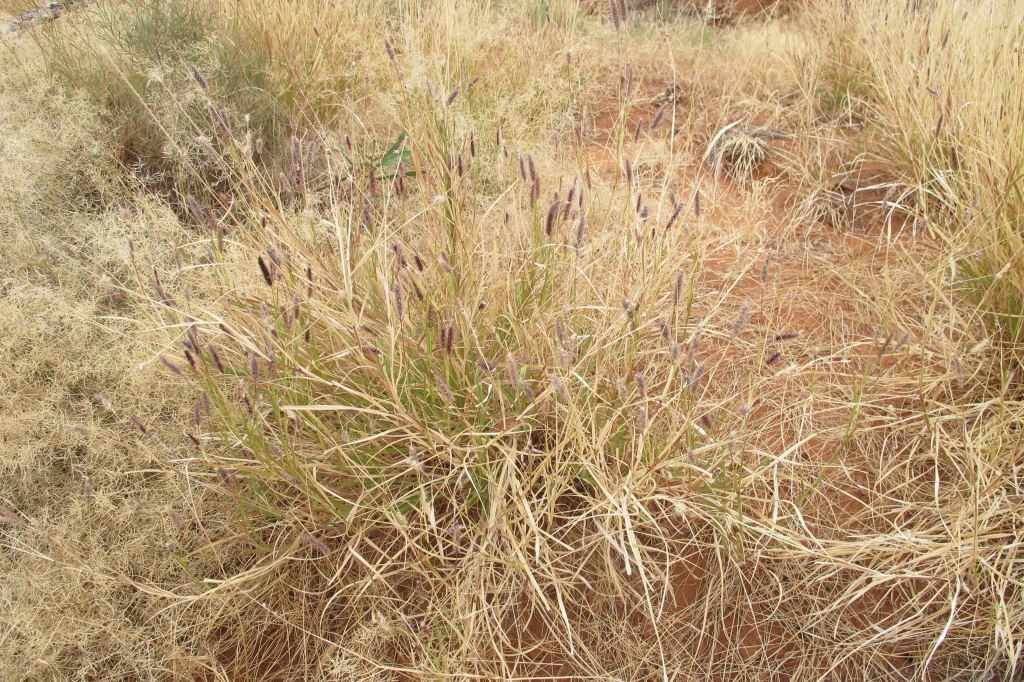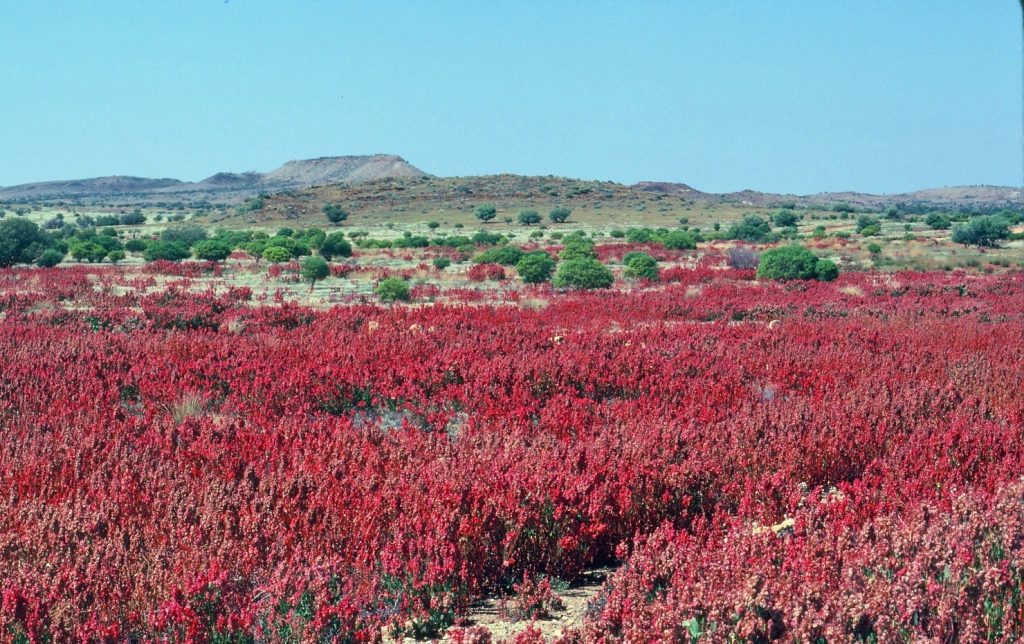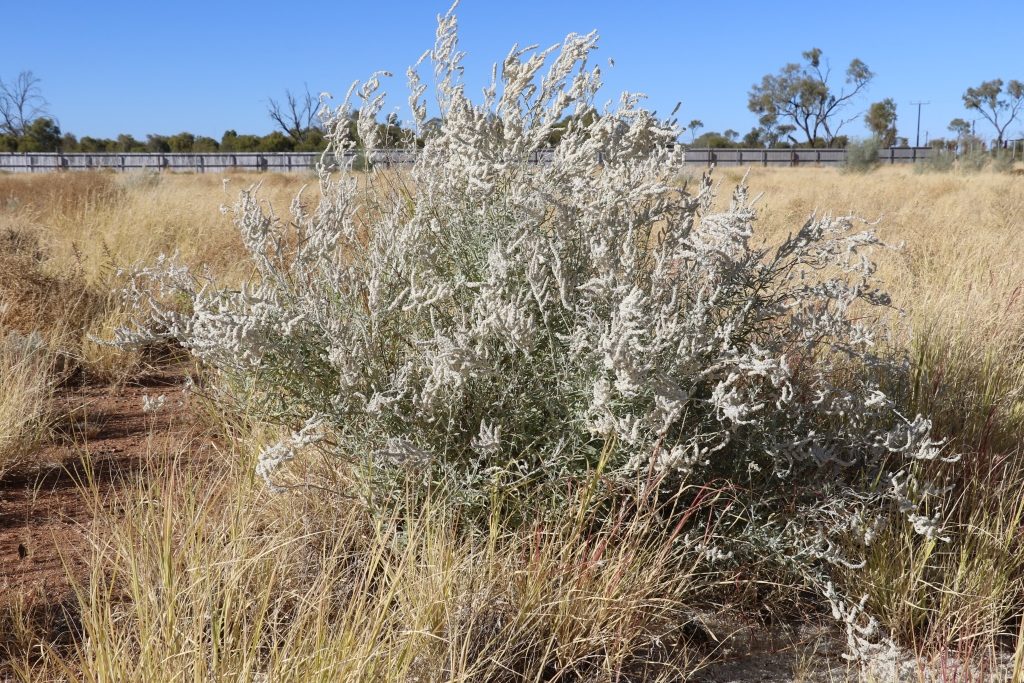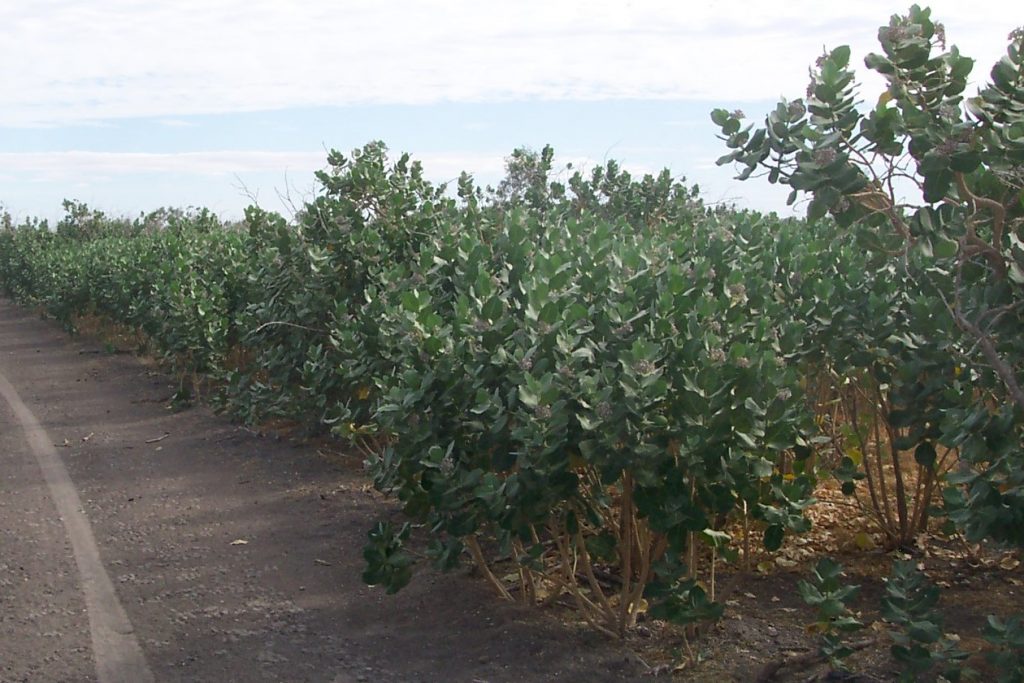By Marg Friedel
Back In March, Marg gave a talk to the Alice Springs Field Naturalists Club, which she called “Where did they come from and how did they get here? Examining the evidence for some familiar weeds of arid central Australia”. As part of her rummaging in the records of Australia’s Virtual Herbarium (AVH), and lots of follow-up reading and discussion, she found evidence for camel harness being the source of a surprising number of invasive plant species.
Not so surprising was the evidence for Buffel Grass (Cenchrus ciliaris), which was first recorded in AVH south of Wyndham in 1897, near the Ord River. Camels were in use, supplying the goldfields at Hall’s Creek, and the cameleers commonly rested at waterholes and creeks. From the 1880s, camels were sourced from India to modern Afghanistan and were brought into Western Australia via Fremantle predominantly, as well as Geraldton, Port Hedland and Albany. They serviced the pastoral industry and mines both inland and along the WA coast. Joe Moore, storekeeper at Port Headland, persuaded school children to collect the seeds from buffel grass growing around the town from about 1910, and distributed it to stations in the district.
Buffel grass also came with camels via Port Augusta from the 1860s, and camel trains and Ghan towns were a feature of much of inland South Australia, Northern Territory and New South Wales, as well as WA. The first herbarium record for NT is Woodforde Well in 1931, but we know from Walter Smith that cameleers were deliberately spreading buffel grass well before that.
Fountain Grass (Cenchrus setaceus) first appears in AVH in 1903 at Eurelia, near Orroroo, South Australia. Cloncurry Buffel (Cenchrus pennisetiformis), supposedly introduced by General Birdwood after WWI, appears in 1915 in the Geraldton-Greenough area. Birdwood Grass (Cenchrus setigera), appears at Roebourne in 1932, in keeping with its introduction by General Birdwood. Hence it’s likely that three of the Cenchrus species, including buffel grass, came with camels initially, and that subsequently there were deliberate introductions.
Rosy Dock (Acetosa vesicaria) was first collected by naturalist Richard Helms in Perth in 1892, after he left the Lindsay expedition in the Murchison district. Rosy dock is native to north Africa, southwestern Asia and the Indian sub-continent, so it’s a likely accidental inclusion in camel harness arriving in Fremantle.
Kapok Bush (Aerva javanica) was found in 1937 on the de Grey River and Roy Hill Station in 1938, according to AVH. The Ord River Regeneration Project was undertaken from the 1960s, using seed sourced from existing populations on Anna Plains station in the Pilbara and Fitzroy Crossing in the West Kimberley. These populations were understood at the time to have come from camel harness, and kapok bush was known to be used historically by Arabian people for cushion and saddle padding.
Perhaps more surprisingly Rubber Bush (Calotropis procera) is likely to have arrived with the camels that serviced the railhead at Mungana, in Queensland, for the nearby copper mines. A railway operated from Mareeba to Mungana from about 1900, and Mungana was the focus for camel teams for about six years. Rubber bush was first reported in AVH in 1935 at Mungana.
And of course the date palm (Phoenix dactylifera) was distributed by cameleers, all up giving us quite a substantial list of species likely to have arrived with cameleers and their camels.
Marg would like to hear from anyone with any additional information – whether in support or counter to her story.
~ Marg Friedel



